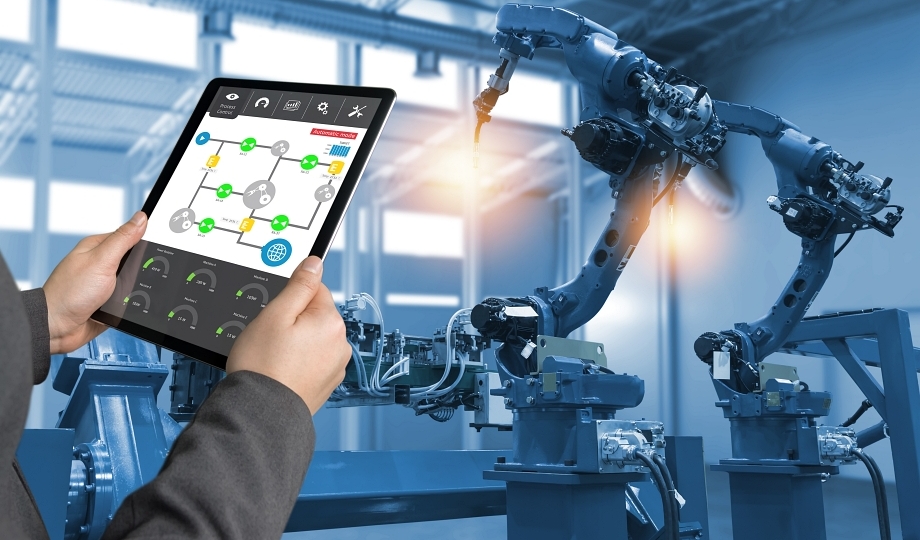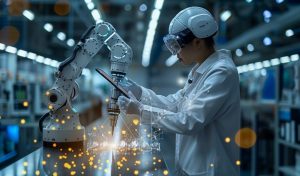
Automation technology is fundamentally changing how we build and manufacture by increasing productivity, enhancing precision, and fostering innovation. Automated systems, including industrial robots and AI-powered solutions, are taking over repetitive and complex tasks. They create faster production cycles, reduce errors, and improve quality.
The automation technology shift is also creating new job opportunities in areas such as automation maintenance and AI development. It frees up human workers for more creative, strategic, and leadership roles. Let’s take a more detailed look at the changes. Contact ITI Technical College today for more information on how automation technology is transforming industries.
Automation Technology Leads To Increased Productivity And Efficiency
 Technicians, construction crews, construction managers, and plant managers are excited about the benefits of automation technology. They appreciate the following advancements:
Technicians, construction crews, construction managers, and plant managers are excited about the benefits of automation technology. They appreciate the following advancements:
- Increased Productivity and Efficiency: Automated systems can operate continuously without human intervention, leading to higher output and faster production.
- Reduced Downtime: These systems minimize downtime caused by human error, maintenance, and shift changes.
- Faster Production Cycles: Automated processes can complete tasks more quickly than manual methods, resulting in shorter lead times.
- Predictive Maintenance: Automation can be programmed to schedule regular equipment and machinery maintenance. It can also detect when troubleshooting, repair, and replacement of parts are required.
- Example: One company reports that automated packaging machines can reduce packaging time from 20 hours to just 5.
Automation Creates Enhanced Precision And Quality
Every construction company and manufacturer continuously seeks ways to enhance precision and quality. Automation technology provides several significant ways to achieve these goals. Automated systems ensure that each structure or product is made to the same specifications, minimizing variations and defects.
Automated processes can meet strict quality control requirements that may be difficult to achieve with manual labor. This technology reduces the likelihood of human error, leading to fewer defects and higher quality products. Robotic systems can handle many materials with greater precision and efficiency, reducing human injuries, waste, and damaged materials. Robots can also stock warehouse shelves, load and unload trucks, and fill some orders effectively.
|
“Automation technology is fundamentally changing how we build and manufacture by increasing productivity,enhancing precision, and fostering innovation.” |
Transforming The Construction And Manufacturing Workforces
New technologies, construction equipment, building methods, machinery, and manufacturing processes always require trained workers. Here are some ways automation is transforming the U.S. and global workforces:
- Reskilling and Upskilling: Automation is creating new roles that require specialized skills, such as AI development, automation maintenance, and data analysis. While some jobs may be displaced, other new jobs are created, including system design, programming, data analysis, and AI management.
- Focus on Higher-Level Tasks: Employees are freed from most repetitive tasks to focus on more complex, creative, and strategic work, such as planning and leadership.
- Innovation and Problem-Solving: With mundane tasks handled by automation, workers can dedicate more time and mental energy to innovation, problem-solving, and product development.
- Human-Machine Collaboration: Many automated systems are designed to work alongside humans, such as cobotics, allowing workers to focus on other tasks.
Other Notable Impacts Of Automation Technology
 Other notable impacts of automation technology are apparent in today’s construction and manufacturing industries. Automation can lead to lower input production costs due to increased efficiency and reduced waste. The technology is used for the production of more specialized and customized structures and products.
Other notable impacts of automation technology are apparent in today’s construction and manufacturing industries. Automation can lead to lower input production costs due to increased efficiency and reduced waste. The technology is used for the production of more specialized and customized structures and products.
AI and machine learning can analyze data to provide insights and predictive analytics, leading to better decision-making. Streamlined production facilities often produce less pollution, consume less energy, and reduce waste. Automation tools can integrate and migrate data across systems, providing real-time insights and comprehensive reporting.
Robots and smart factories will become more collaborative and adaptable, working with humans in a wider range of tasks. The integration of AI and machine learning will continue to drive automation, leading to more sophisticated and intelligent systems.
Automation Technology Safety, Scalability, And Flexibility
Automation technology plays a crucial role in enhancing workplace safety. Robots and automated systems can take over hazardous and physically demanding tasks, thereby reducing the risk of workplace injuries and accidents. Safer working environments are created for workers, and downtime due to health and safety incidents is minimized.
Today’s Automation Technology Is Transforming Industries, and automated systems are highly adaptable and scalable for construction and manufacturing. Manufactured housing production lines can easily adjust to accommodate changes in product design, volume, or processes. Flexibility is essential in today’s dynamic markets, as consumer preferences and industry standards are constantly evolving.
Discover how the Automation & Electronic Systems Technology (AOS) Associate In Occupational Studies Degree at ITI Technical College can prepare you for an entry-level career in this fast-growing, dynamic industry.
For more information about graduation rates, the median debt of students who completed the program, and other important information, please visit our website: https://iticollege.edu/disclosures/




